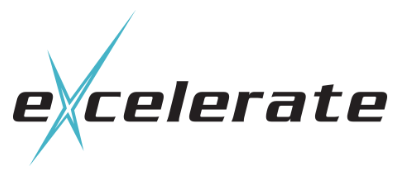-
StatusOngoing
-
Status date2025-09-17
-
Activity Code3A.188
As part of this UK Space Agency and European Space Agency (ESA) project, Smart City MK Community Interest Company, Ohmio UK and Excelerate are working together with other service providers, paving the way for delivery of the new SatCAV product, enabling self-driving shuttles and other autonomous services to be operated in places that are not possible today.
Over a 20-month period, the team are undertaking:
- Definition activities: defining the use case, operational, technical and performance requirements, and wider stakeholder engagement
- Technology activities: developing the prototype SatCAV product to meet these requirements
SatCAV is developing novel space-based technologies, addressing the challenges of deploying autonomous services in hard-to-connect areas.
Areas under consideration include the new space-enabled, CAV-optimised 5G cell, and integration of Control Centre and CAV-specific, value-added services, enabling removal of the onboard safety driver and realising a commercially-viable self-driving, first-mile, last-mile shuttle service for deployment into hard-to-connect areas.
The challenges being addressed through development of the space-enabled, CAV-optimised cell include:
- Work to ensure the new product offers levels of reliability, availability and security demanded by CAVs;
- Integration into a remotely operated Control Centre, enabling full remote monitoring, tele-operation and two-way passenger communications;
- Consideration of CAV-specific, value-added, network-based services e.g. predictive GNSS and Vehicle-to-everything (V2X) safety platform interaction, enhancing onboard decision-making and improving situational awareness;
- Introducing 'by-wire' solutions that connect shuttle, Control Centre and roadside infrastructure to deliver commercially-viable self-driving, first-mile, last-mile shuttle services for deployment into hard-to-connect areas with no onboard safety driver.
The SatCAV product offers a number of competitive advantages for a number of customers:
- Mobile Network Operators: require a cost-effective solution to extend 5G coverage; use of satellite backhaul reduces cost to build, operate and maintain 5G cells;
- Neutral Hosts: require a shared 5G backhaul solution that can support multiple tenants that is cost competitive and fast to deploy; use of satellite backhaul speeds up deployment and is less intrusive; individual tenants can be securely segmented and operated ‘as-a-service’;
- CAV operators / service providers: require a 5G solution to support CAV deployment in urban, suburban and rural areas; connectivity must be available, reliable, ubiquitous, safe and secure, high bandwidth, high density (line of sight operation), low latency, low cost with minimal disruption.
The SatCAV product is extensible, offering other services across market verticals, including community wi-fi, pollution or congestion monitoring, or resiliency to enable emergency services to operate if primary networks have failed. The ability to deploy either as a retro-fit to existing infrastructure or as an integrated infrastructure solution to support new housing or commercial developments provides a high degree of flexibility and significant cost advantages over other solutions, particularly given the ‘plug-and-play’ nature of the solution.
The SatCAV product comprises the following components:
- 5G New Radio antenna;
- Central unit;
- Radio unit;
- Distributed unit;
- Low Earth orbit (LEO) satellite antenna;
- LEO satellite modem;
- Associated IP transport and compute;
- Mechanical and electrical housing.
The product will be inter-operable, and compatible with 5G standalone / non-standalone and OpenRAN architectures, maximising deployment opportunities.
In addition to the SatCAV components listed, the end-to-end solution architecture incorporates:
- The L4 Ohmio Lift self-driving shuttle, and onboard 5G User Equipment and onboard GNSS receiver (with RTK correction);
- The Vehicle-to-everything (V2X) real-time safety platform;
- The Smart City Data Exchange used to securely store telemetry and other related data;
- The NEPTUNE dashboarding and visualisation control centre application;
- Predictive GNSS capabilities;
- Remote Monitoring and Tele-operations hardware and software;
- Passenger interaction technology;
- 5G Core and RIC integration.
Additionally, facilities including the Smart City Experience Centre, Smart City Control Centre and Smart City testbed are being used to support the test and integration work.
Over a period of 20 months, the team are undertaking the following phases, with follow-on Product and Demonstration phases anticipated:
- Definition activities: defining the use case, operational, technical and performance requirements, and wider stakeholder engagement; Definition work will be undertaken over 4 months – from August to November 2025 (inclusive)
- Technology activities: developing the prototype SatCAV product to meet these requirements; technology work will be undertaken over 16 months – between December 2025 to March 2027 (inclusive)
Following contract award and kick-off meeting, the initial definition work has been completed ahead of the mid-term review late September 2025. The focus has been on working with potential end customers and users of the self-driving shuttle service, to understand service requirements in order to develop a set of use cases and technical requirements. As part of this work, an initial high-level description and product concept has been developed which will be finalised in the latter stages of definition along with activities to publicise the project.





